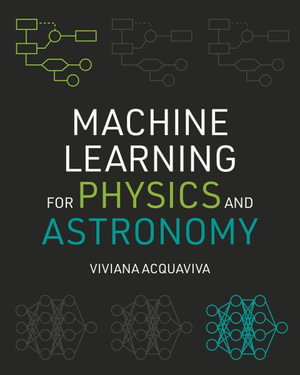
PublishedPrinceton University Press, June 2024 |
ISBN9780691206417 |
FormatSoftcover, 280 pages |
Dimensions25.4cm × 20.3cm |
A hands-on introduction to machine learning and its applications to the physical sciences.
As the size and complexity of data continue to grow exponentially across the physical sciences, machine learning is helping scientists to sift through and analyse this information while driving breathtaking advances in quantum physics, astronomy, cosmology, and beyond. This incisive textbook covers the basics of building, diagnosing, optimising, and deploying machine learning methods to solve research problems in physics and astronomy, with an emphasis on critical thinking and the scientific method. Using a hands-on approach to learning, Machine Learning for Physics and Astronomy draws on real-world, publicly available data as well as examples taken directly from the frontiers of research, from identifying galaxy morphology from images to identifying the signature of standard model particles in simulations at the Large Hadron Collider.
Introduces readers to best practices in data-driven problem-solving, from preliminary data exploration and cleaning to selecting the best method for a given task
Each chapter is accompanied by Jupyter Notebook worksheets in Python that enable students to explore key concepts
Includes a wealth of review questions and quizzes
Ideal for advanced undergraduate and early graduate students in STEM disciplines such as physics, computer science, engineering, and applied mathematics
Accessible to self-learners with a basic knowledge of linear algebra and calculus
Slides and assessment questions (available only to instructors)

